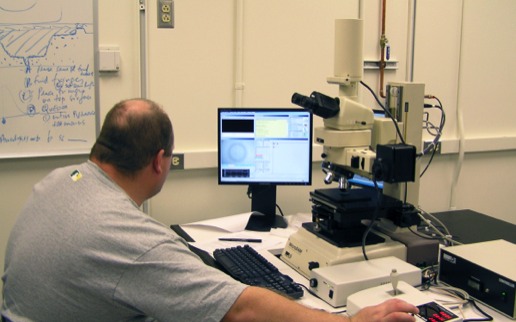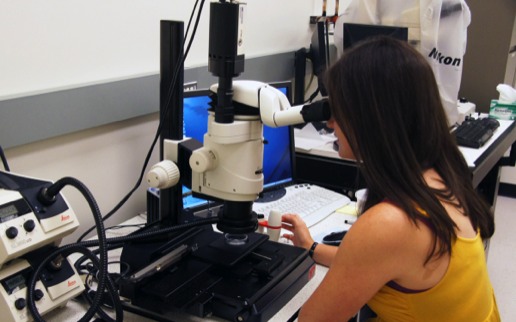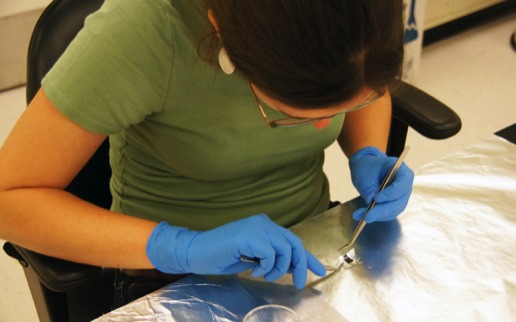⬆ The view from the vestibule: NG3L's new home in Interdisciplinary Science and Technology Building 4 on ASU's Tempe campus
Established in 2006, the Noble Gas Geochronology and Geochemistry Laboratories (NG3L) at Arizona State provide state-of-the-art facilities for ASU researchers and our guests. The main instrument room houses analytical systems for both quadrupole and magnetic sector mass spectrometry.
Conventional (U-Th)/He Thermochronology
'Conventional' (U-Th)/He thermochronology refers to single-crystal dating of various phosphate minerals, titanite, and zircon. Helium analyses for this work is done with a turnkey Alphachron MkII helium extraction and measurement system built by CSIRO/Patterson Instruments/ASI (on left in the accompanying photo). Helium extraction is accomplished using either a Farley-Nenow diffusion cell or 970 nm diode laser. Isotopic measurements are done by isotope dilution using a small quadrupole mass spectrometer.
To the right in the photograph is a new Thermo Scientiifc iCAP Q inductively coupled plasma mass spectrometer which we use for complementary isotope dilution measurements of Sm, Th, and U.
To the right in the photograph is a new Thermo Scientiifc iCAP Q inductively coupled plasma mass spectrometer which we use for complementary isotope dilution measurements of Sm, Th, and U.
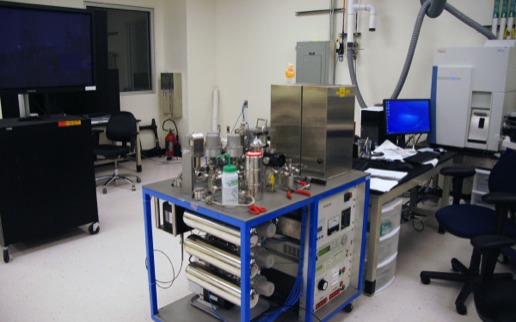
Noble Gas Isotope Geochemistry, Laser Microprobe Helium Analyses, and Laser Depth Profiling of Diffusion Profiles
High-resolution, low-blank measurements of helium and neon isotopes are performed using an integrated system featuring a split flight tube mass spectrometer, the Thermo Electron (GV Instruments) Helix SFT. Bulk diffusion experiments are performed using a custom diffusion cell that employs a fiber optic infrared laser (with contact thermocouple feedback) as a heat source. Laser microprobe helium measurements and depth profiling involve the use of a NewWave Research ArF excimer coupled to the Helix extraction system.
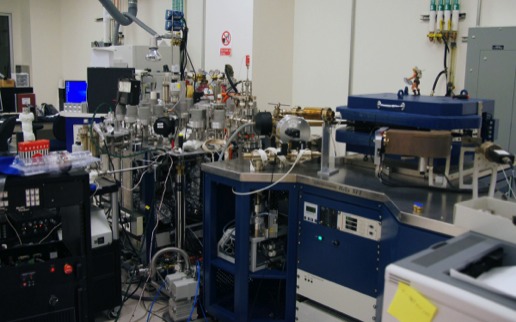
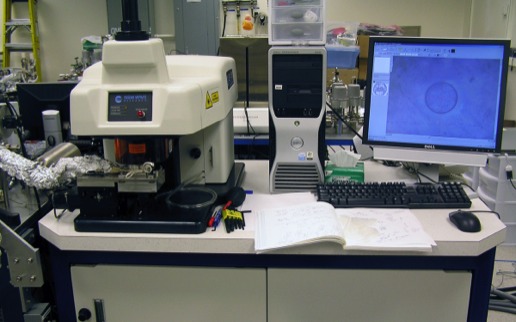
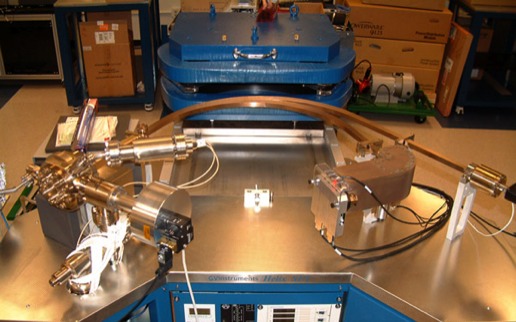
Conventional 40Ar/39Ar Geochronology and Thermochronology
'Conventional' 40Ar/39Ar dating is done on one of two Nu Instruments Noblesse magnetic sector mass spectrometers in NG3L. Our Noblesses feature four collectors (one Faraday and three ion counting multiplier detectors) and are ideally suited for high-precision work on small sample aliquots. The conventional system is especially designed for incremental heating and fusion analyses of single crystals and small multigrain aliquots, the sorts of measurements commonly employed for dating volcanic rocks, determining the cooling ages of minerals, or for detrital mineral 40Ar/39Ar thermochonology. Gasses are liberated from a sample using an infrared (970 nm) diode laser with optics and stage automation by Photon Machines.
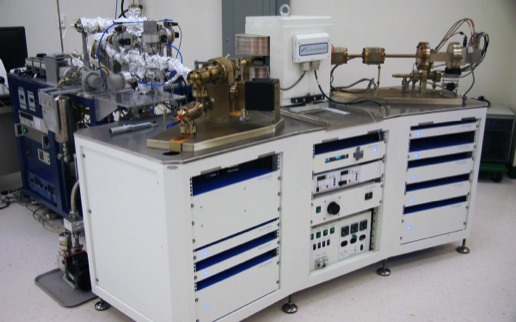
Laser Microprobe 40Ar/39Ar Thermochronometry
At MIT, prior to moving to Arizona State, the KVH group established one of the first ultraviolet laser microprobe facilities for 40Ar/39Ar work in the United States. At NG3L, we carry on that tradition with an Ar extraction system centered around our second Noblesse and an ArF excimer laser. The accompanying backscattered electron image shows excimer laser ablation pits in biotite from Condon et al. (2006).
Publication
Condon, D.J., Hodges, K. V., Alsop, G. I., and White, A., 2006, Laser ablation 40Ar/39Ar dating of metamorphic fabrics in the Caledonides of north Ireland: Journal of the Geologcial Society of London, v. 163, p. 337-345.
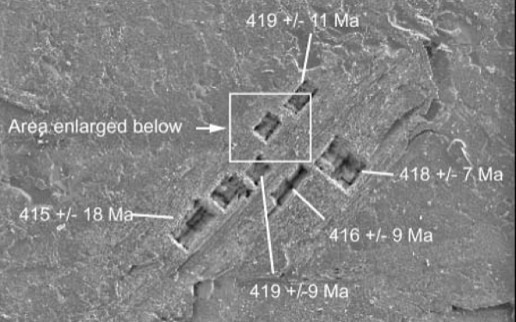
Additonal Instrumentation
Other laboratory spaces house complete facilities for mineral separation and the preparation of grain mounts for laser microprobe analysis. Ablation pit geometries are measured precisely using an ADE Phase Shift MicroXAM interferometric microscope.
New Users Welcome
We welcome external academic and corporate users into the laboratory for fee-based collaborative work. Contact KVH for further information.
